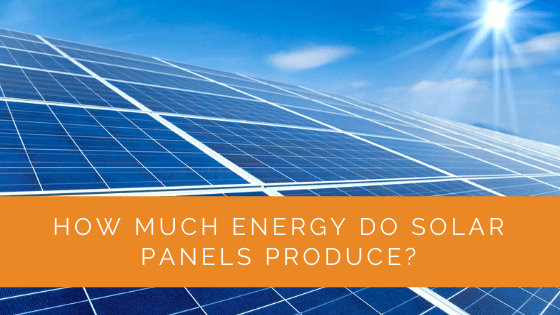Are you planning to buy solar panels for your home or building to reduce the power bill? It would be best if you had many questions, like how much electricity solar panels can produce. Or how much solar energy can be obtained from the solar panels?
The list goes on, but all these questions can certainly be answered by calculating the solar energy produced by the solar power system.
The amount of solar power solar panels produce depends on size, cell efficiency, location, wattage, sunlight hours, and many others. Moreover, how many solar panels you use will also affect the output.
Before buying a solar panel from any solar company, you must know everything. It will help you in making a better decision.
You have come to the right place if you want to know how much energy a solar panel system can produce. This article will tell you how much electricity your solar panel can produce and how to get more electricity output from your solar panel.
Let’s get started without further ado.
Contents
- 1 Key Takeaways
- 2 What Is a Solar Cell, and How Does It Work?
- 3 What Effect Does Light Have on Solar Panels?
- 4 What Are the Factors that Affect the Solar Panel Output?
- 5 Why Is It Important to Know the Solar Capacity of Your Solar System Beforehand?
- 6 How Much Energy Does a Single Solar Panel Produce?
- 7 How Much Energy Can an Entire Solar Panel System Produce?
- 8 How Long Do Solar Panels Take to Pay for Themselves?
- 9 How Many Solar Panels Do I Need?
- 10 How Much Space Do I Need for Installing Solar Panels?
- 11 What Are the Issues that Solar Panel Owners Have to Deal With?
- 12 Case Study: Maximising Energy Production with Solar Panels Network
- 13 Expert Insights From Our Solar Panel Installers About How Much Energy Do Solar Panels Produce
- 14 Discover the Power of Solar with Solar Panels Network
- 15 To Sum Up
Key Takeaways
- The amount of energy produced by solar panels depends on factors like panel size, cell efficiency, location, wattage, sunlight hours, and the number of panels used.
- Solar panel wattage plays a significant role in energy production, and efficiency varies depending on the type of solar panel used.
- Understanding the solar capacity of your system is crucial for saving on electricity bills, making informed purchases, and meeting your energy requirements.
What Is a Solar Cell, and How Does It Work?
A solar or photovoltaic cell comprises two sandwiched silicon semiconductor layers, N-type and P-type. The N-type layer contains elements such as arsenic, which gives the cell a negative electric charge.
On the other hand, the P-type layer has elements such as boron or gallium, which provide the cell with a positive charge.
These two layers act as two battery terminals when linked to a circuit. Electric current travels from the positive layer to the negative layer.
We know flowing electrons produce electric current, and solar panels use sunlight. When the solar cell is exposed to sunlight, the pictures transfer energy to the electrons in the P-type layer.
As a result, electrons transfer this energy to the top N-type layer. The passage of electrons aids the development of an electric current.
What Effect Does Light Have on Solar Panels?
When charging a solar panel, the amount of light that falls on it is crucial. The solar panel’s output or efficiency is related to the light it receives.
The amount of light or light intensity affects the current voltage, short-circuit current, and the maximum output of a solar cell. The better the output, the higher the light intensity.
However, the output of the solar cell approaches a limit after a certain point, beyond which more light will not produce more current. The type of light used impacts the output or efficiency, and when the cell is energised with sunshine, it performs at its best.
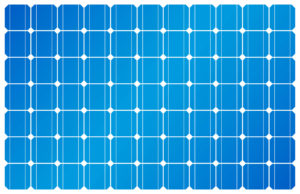
What Are the Factors that Affect the Solar Panel Output?
Knowing the solar panel output beforehand is best because it will help you in the future.
Several solar panels are available on the market due to the solar industry boom. Hence, it has become challenging to choose the right one. However, if you know the factors that influence the solar panels’ output, you will surely make the right move.
Multiple factors determine how much energy solar panels produce. We have listed the primary ones here for your understanding. Have a look-
Number of Solar Panels Used
How many solar panels you use will be a determining factor in the amount of electricity produced.
The more the number of panels in your solar panel system, the more the solar panel’s output will be.
To get the best out of the renewable energy you get from your solar power system, you must ensure that the area where you install the solar panel system is big enough. If you install it on your roof, ensure ample space and a south-facing roof.
Solar Panel Wattage
Energy production by a single solar panel depends mainly on solar panel wattage.
Solar panel manufacturers and people generally define solar panel wattage as the maximum power output solar panels produce under ideal daylight hours and temperatures.
Wattage is determined by multiplying volts by amps, where volts denote the electrical force and amperes (amps) denote the total energy used.
Hence, the amount of power you can generate from the solar panel or solar panel system will depend mainly on the wattage of individual solar panels.
Type of Solar Panels Used
It doesn’t matter if you are looking for residential solar panels or your office; the type of solar panel will not be determined by how you will use it. Conventional solar panels that have been in use for decades are monocrystalline panels and polycrystalline panels. However, different types of panels, like TFSCs, A-Si, etc., are on the market today.
All these different kinds of solar panels have different sizes and cell efficiency, which means that how much solar power you get from the solar panels depends on the type of panel used.
Solar Panel Efficiency
How much electricity your solar panel produces depends on its efficiency. It is also known as the solar panel output by many.
Efficiency is the ratio of output and input energy of the solar systems.
Solar cells have specific efficiency, calculated for determining how much power or electricity your solar panels produce. Hence, make sure to check the efficiency before buying.
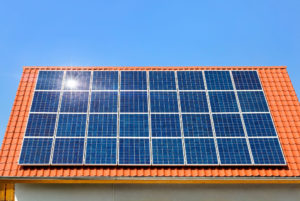
Amount and Angle of Sunlight
The amount of power or kWh of electricity produced by the solar panels also depends on the amount of light or solar energy it receives. Hence, it is crucial to ensure that the solar panels are placed in a non-shady place that gets enough energy from the sun all day.
Home solar panels are usually not appropriately fixed if one tries to do it independently. Most solar panels get placed at the wrong place or angle if one does not get help from local installers.
Moreover, the solar panel output also depends on the solar radiation in your region. Hence, if you want to produce more energy from your solar PV system, you must ensure it gets ample direct sunlight.
Why Is It Important to Know the Solar Capacity of Your Solar System Beforehand?
As mentioned earlier, it is quite essential to know the kilowatt-hours of energy or how many watts of power your solar panels generate. There are quite a few reasons behind it, and we have listed a few of them below. Have a look-
Save on Electricity Bill
If you know the solar power output of your solar panels beforehand, you can save on the electricity bill strategically. You will learn how many hours of daylight your system will take for energy production and how much energy it will produce.
Buy Smarter
Once you know what factors affect the solar power output of the solar cells and what solar capacity is in the first place, you will be able to buy solar panels intelligently.
Get Clear Idea
Knowing how much energy your solar panel produces will give you an idea of how many solar panels you need to buy to meet your energy requirements.
How Much Energy Does a Single Solar Panel Produce?
You first need to know the type of solar power technology the particular solar panel uses. In general, Monocrystalline panels are more efficient than polycrystalline panels.
You will be informed about the wattage of the solar panel by the manufacturer when you purchase the panel.
Most of today’s solar panels have power output ratings ranging from 250 to 400 watts. In general, higher power ratings are preferred over lower power ratings.
So, let’s assume that you have a solar panel of 400 watts and get 5 hours of sunlight in a day. In this case, you will have 400*5=2000 kilowatt-hours daily for all your electrical connections.
How Much Energy Can an Entire Solar Panel System Produce?
Now that you know how to calculate the output of a solar panel, it is easy to calculate for the whole system.
First, you need to determine the wattage of a solar panel, the number of solar panels in the system, and the daylight hours. Next, all you need to do is to put these values in the following formula-
The system’s total output = number of panels * daylight hours* wattage of a single panel.
For example- consider that you have 20 solar panels in the system, 5 hours of daylight, and each solar panel is 400 watts. Hence, your total solar panel output will be 20*5*400=10000 Kilowatt-hours Kwh. This is a considerable amount that will help you benefit from the feed-in tariff.
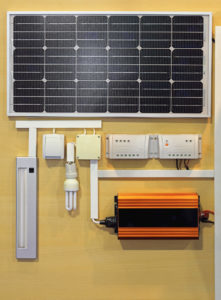
How Long Do Solar Panels Take to Pay for Themselves?
As previously stated, the repayment period is determined by various circumstances. Determining how long your solar panel will take to pay for itself is impossible, but we can estimate.
The payback period can range from 5 to 16 years in general.
The payback period is uncertain because it is influenced by personal characteristics like consumption rates, which we may not be aware of. You can quickly figure out how long it will take you to pay off your loan. How? Continue reading to find out more.
How Many Solar Panels Do I Need?
One can easily calculate the number of solar panels they need by considering the annual power consumption.
First, you will have to calculate the average of your monthly consumptions. Next, you need to divide this average value obtained by the monthly power output of your solar panel system.
Lastly, you must divide the value obtained previously by a single solar panel’s wattage or power output. Voila! You have the number of solar panels required for your home or building.
How Much Space Do I Need for Installing Solar Panels?
The amount of roof space required for solar panel installation depends entirely on the size, number, and kind of solar panels utilised (residential or commercial).
Solar panels come in various sizes, depending on the model and manufacturer. However, the majority of installations use 60-cell or 72-cell modules.
The 60-cell panels are often classified as residential, while 72-cell panels are classified as commercial.
60-cell panels, on the other hand, are often 65×39 in, while 72-cell panels are typically 77×39 in. In other words, 72-cell panels are taller than 60-cell panels, but their breadth is the same.
Hence, the amount of roof space you will need can be determined by calculating the overall area of your roof divided by the overall area of the solar panel system.
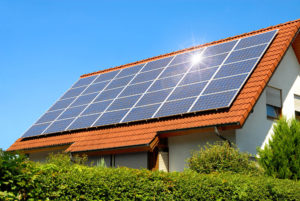
What Are the Issues that Solar Panel Owners Have to Deal With?
There will be many doubts and hardships that solar panel owners have to face. These difficulties have a significant impact on the energy produced by solar panels. Here’s a list of some of the challenges:
- Unpredictable weather conditions.
- Poor quality of the solar panels.
- Unprecedented construction nearby hinders the sunlight.
Case Study: Maximising Energy Production with Solar Panels Network
Background
At Solar Panels Network, we have always prioritised educating our clients about the factors that influence solar energy production. Our approach is rooted in providing customised solutions that align with the unique energy requirements and environmental conditions of each client. This case study explores our method in advising a residential client on maximising their solar panel output, demonstrating our commitment to delivering effective and efficient solar energy solutions.
Project Overview
The client, a homeowner in the Herefordshire, approached us with a goal of significantly reducing their electricity bills through solar energy. They were keen to understand how much energy they could realistically produce with solar panels and how to optimise their setup. The client’s property had ample roof space but was located in an area with moderate sunlight throughout the year.
Implementation
- Assessment of Energy Needs: We began by analysing the client’s average monthly energy consumption, taking into account seasonal variations and peak usage times.
- Site Evaluation: Our team conducted a thorough site assessment to determine the most effective placement of solar panels, considering factors such as roof orientation, angle, and potential shading from nearby structures.
- Panel Selection: Based on the evaluation, we recommended a combination of high-efficiency monocrystalline panels to maximise energy production, given the moderate sunlight availability.
- System Sizing and Configuration: We calculated the optimal number of panels and system size required to meet the client’s energy needs, ensuring that the setup could generate sufficient power even on less sunny days.
- Installation and Monitoring: The installation process was carried out with precision, followed by setting up a monitoring system to track real-time energy production and consumption.
Results
- Increased Energy Production: The high-efficiency panels significantly boosted the energy output, covering the client’s daily electricity needs and generating surplus power on sunny days.
- Cost Savings: The efficient setup led to a noticeable reduction in electricity bills, with the client saving over 50% on their monthly energy costs.
- Improved Energy Independence: The system’s performance reduced the client’s reliance on the national grid, providing greater energy security and resilience against power outages.
- Client Satisfaction: The client expressed high satisfaction with the transparency and effectiveness of the solution provided, particularly appreciating the detailed guidance and education on solar energy production.
Summary
This case study highlights Solar Panels Network’s expertise in maximising solar energy production for residential clients. By focusing on a comprehensive assessment of energy needs and environmental conditions, we were able to design and implement a highly efficient solar panel system. The result was significant cost savings and increased energy independence for the client. This project underscores our commitment to providing tailored, sustainable energy solutions that meet the specific needs of each client.
Expert Insights From Our Solar Panel Installers About How Much Energy Do Solar Panels Produce
Understanding the energy output of solar panels is crucial for homeowners looking to optimise their investment. Factors like panel efficiency and location play significant roles in determining how much electricity you can generate.
Senior Solar Installer
One of the common misconceptions is that more panels always mean more energy. However, the quality and type of panels are just as important as the quantity. High-efficiency panels can often outperform a greater number of lower-quality ones.
Renewable Energy Specialist
Calculating the potential energy production involves understanding your specific needs and environmental conditions. This tailored approach ensures that customers get the most out of their solar installations.
Lead Solar Consultant
Discover the Power of Solar with Solar Panels Network
Are you navigating the world of solar installations? Look no further than Solar Panels Network, the UK’s trusted partner in harnessing the sun’s potential. Our dedication goes beyond just installations; we’re on a mission to transform how homeowners and businesses across the UK perceive and utilise energy. By choosing us, you’re reducing your carbon footprint and making a smart financial move that promises savings for years ahead. Contact us today and embark on your solar journey.
To Sum Up
Solar panels are an excellent way to reduce the electricity bill and maximise electricity production. However, you can only benefit from the panels when you know how much power they produce.
Now that you know how to calculate the power output and the factors that influence it, we are sure you will buy smart.
About the Author
Solar Panels Network stands at the forefront of solar energy solutions, driven by a team of seasoned solar engineers and energy consultants. With over decades of experience in delivering high-quality solar installations and maintenance, we are committed to promoting sustainable energy through customer-centric, tailored solutions. Our articles reflect this commitment, crafted collaboratively by experts to provide accurate, up-to-date insights into solar technology, ensuring our readers are well-informed and empowered in their solar energy decisions.

